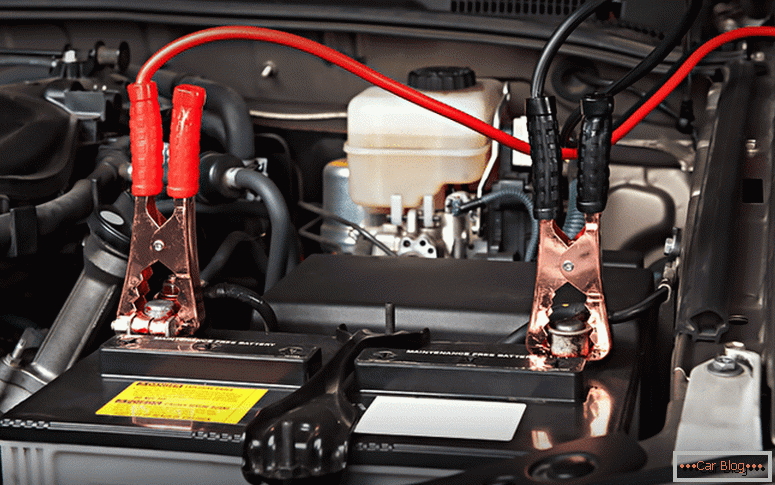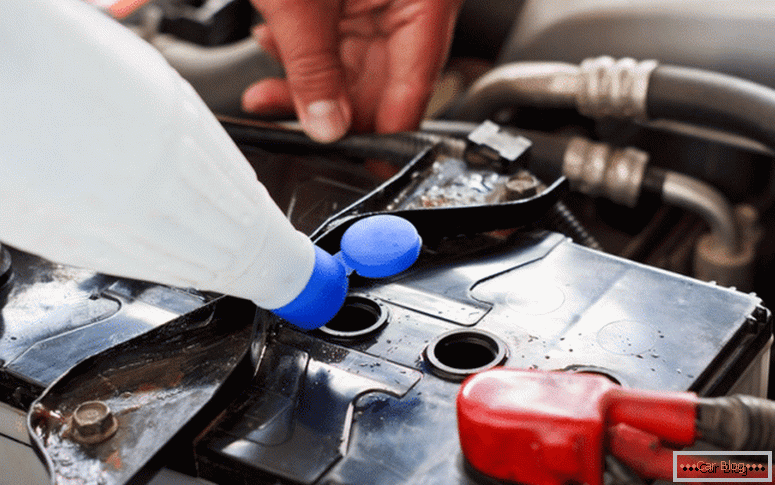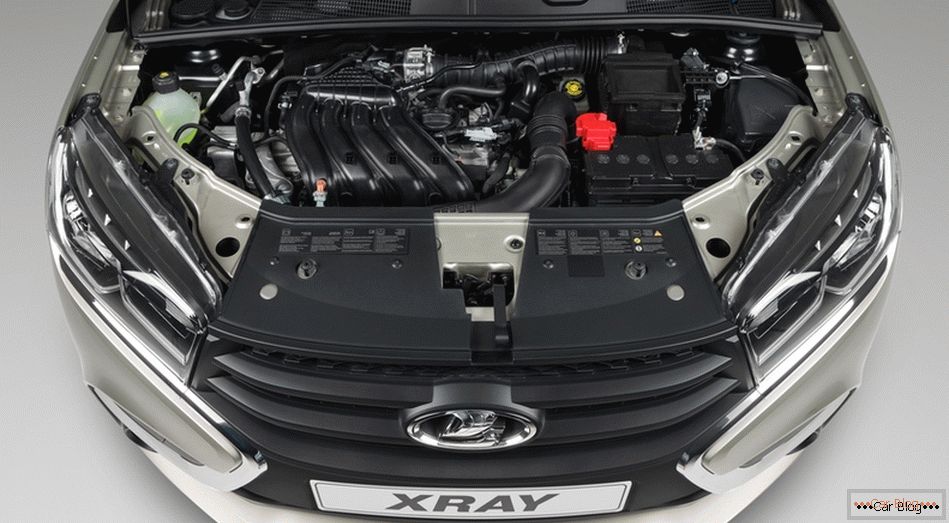Coordinated work of all systems in the car contributes to long-term and uninterrupted operation of the vehicle. But the failure of even one node, such as a battery, can affect many adjacent units or nodes. Let us examine the reasons why the battery in the car is quickly discharged, and how to diagnose such problems.
In some cases, a decrease in the level of charge can take place in just a couple of days. In such situations, you should not delay the replacement of the battery or its repair, if possible. After all, devices connected to the network with a battery may be damaged.
Content
- 1 Operating conditions for various automotive batteries
- 2 Reasons for the discharge of batteries
- 2.1 Structural causes
- 2.2 Operational reasons
- 3 Conclusion
Operating conditions for various automotive batteries
The average lifetime for a low-cost automotive lead-acid battery is 3 years. More precisely, this parameter is determined by the charge / discharge cycles, which for such a period are usually about 1000 times. At the same time during operation it is not recommended to lower the charge level below 80% of the nominal, and also to keep a weakly charged battery for a long time. Such conditions do not contribute to long-term performance.

Gel batteries still belong to a more expensive class of batteries. The liquid electrolyte in them is replaced by a gel mass, which more calmly transfers long discharges even to 0%. Although they are more demanding on the charging characteristics, in particular, to the level of current, but they can effectively serve even for 10 years.
Reasons for the discharge of batteries
After you notice that the battery is quickly discharged, it is necessary to conduct a preliminary diagnosis of the battery condition. It consists of several points:
- surface visual inspection of the integrity of the body to detect chips, cracks, dents or other mechanical damage;
- cleaning the contact terminals from a possible film of chemical oxides and identifying high-quality connection of the contacts;
- control batteries measure the electrolyte density in serviced batteries;
- multimeter checking of output voltage with and without load;
- comparison of the declared capacity with the measured parameter on the tester type SKAT-T-AUTO.
The reasons why the battery sits in the car can be structural and operational.
Structural causes
In this case, the following events may occur:
- battery terminals covered with oxide film;
- part of electrolyte evaporated or drained;
- on the plates formed sulfate bloom;
- due to breakaway pieces of lead plates, a short circuit occurs in the battery.
Each of these points is unequivocally detected, however, there are situations when the fault of a fast battery discharge may be several events. In any case, it is advisable to carry out diagnostics on all known points, even if something has already been identified during the verification process.

Topping up electrolyte
- By weak contact The battery does not receive the required current for recharging. Terminal oxidation occurs frequently due to evaporation of electrolyte from the cans of the battery. Acid vapors react with the lead ends of the electrodes and form a non-conductive barrier. The reason for such events may be a weak tightness of the case. Also, the vaporization of the acid helps overheating of the liquid in the banks. Such couples, in addition to reducing the volume of the electrolyte, reduce its density. To protect against oxides, you can use a special lubricant for terminals or felt rings, which are impregnated with oil. They are worn on the battery electrodes, and a clamping ring is attached on top. Pre-purge of salt with sandpaper or other abrasive material. After establishing contact at the terminals, the battery must be stably charged and set the parameters set.
- Not enough liquid does not provide the required capacity. In order to notice the leakage of electrolyte in serviced batteries in time, it is necessary to regularly monitor its level. It is advisable to carry out such an operation several times a month. The height of the liquid should be 10-15 cm. Measurement can be done in a simple way using a transparent tube with an internal diameter of 4-7 mm and rubber gloves. The pipe should be lowered vertically to the bottom of the jar, and then hold the upper open edge with a finger in order to hold the liquid inside. If the tube is not tared (there are no dashes on the outside indicating the length), then measure the length of the liquid column using any ruler, without releasing the liquid. At low levels, add distilled water in summer or electrolyte solution during the cold season. It is recommended not to do the solution in the cold, as poorly dissolved particles can freeze, which will create big problems for the battery up to its complete failure. Liquid can get lost through loosely twisted plugs. This is noticeable in the streaks around them. Cracks in the housing are also possible. In this case, it is preferable to replace the battery with a new one.
- Sulphate coating on the plates does not fully charge the battery. This process is natural for lead-acid batteries. However, it can develop intensively due to improper operation, then there is a deep penetration of sulfates up to the complete destruction of the plates. During this action, the discharge voltage decreases and the charging voltage rises. In order not to bring to such a state, it is necessary not to completely discharge the battery for a long time, to monitor the cleanliness of the electrolyte, to charge the battery with the set current strength. Observe this phenomenon by indirect signs: an obvious vaporization during the charging process, as well as an overvoltage during the start of charging. If the sulphation is not too deep, then the batteries to be serviced can be washed away from the deposit and restore their output parameters.
- From the disintegrating plates, small conductive pieces become the contact conductors between the positive and negative electrodes in the battery banks. This leads to short circuit. Indirect signs of this phenomenon are the boiling of the electrolyte, decreasing its density, a sharp decrease in voltage. You need to know that a short circuit can completely destroy the battery.
Operational reasons
In addition to the internal features of a battery, various consumers and other external factors, which include:
- the presence of alarm and other small consumers;
- installed powerful multimedia systems;
- generator performance;
- failure of electrical equipment.

Battery Capacity Monitoring
Consider all the situations in order.
- You need to know that in a modern car, even when the ignition is off, lighting devices and audio systems consume electricity. She is required to maintain power alarm, the clock on the dashboard, for the windows, the inclusion of immobilizer, etc. If it is possible to flip the wires from the battery terminals, then only in this case the current consumption will not be for sure. The more functional the alarm, for example, with connection via GPRS or GPS, the more energy it will take. Installation of an additional autonomous battery only for this security system will help to reduce consumption. Such a step also increases the level of security, because the fraudster does not know about the presence of a second battery.
- Increasing comfort in the car, car owners mount inside powerful multimedia centers. “Voracious” consumers are set up as additional equipment: subwoofers, various sound amplifiers, or several LCD monitors. In this case, the power supply is not always calculated correctly, and often remains with a standard battery. Even while driving, the generator power is not enough for such a quantity of equipment, therefore the devices are fed from the battery, discharging it. Ignoring the calculated parameters of consumers is not worth it, but it is necessary to strengthen the electrical part with a more powerful battery.
- Doing a bad job generator able to harm the battery. Constant undercharging quickly disables the battery. You can even test the generator without removing it from the spot. Pre-controlled tension on the belt. With a weak tension, it can be adjusted with a tensioner so that there is no slipping on the pulley. This problem can be seen when the engine is running under the open hood. It happens that the generator has problems with graphite brushes or with a voltage regulator relay. In this case, only the replacement of these units or the entire device will help.
- In difficult electrical circuits Modern cars work different nodes can be interconnected. Such a connection is not always explicitly expressed, therefore, it sometimes takes a long time to identify a breakdown in electrical circuits. Such faults can also have a negative effect on the battery level. For their search, it is more expedient to contact specialists at service stations.
Conclusion
In addition to the active reasons that contribute to the fact that the new battery quickly "sits down", there is simply a battery defective from the factory. If it was purchased recently and the warranty period is not worked out, then you can contact the store with a check and warranty card. Sellers are required to change it or return the money.
Rapid discharge is also characteristic of an exhausted, unattended battery. If it is possible to change the electrolyte in the serviced devices and wash the plates, then for unattended only a complete replacement of the battery remains.



